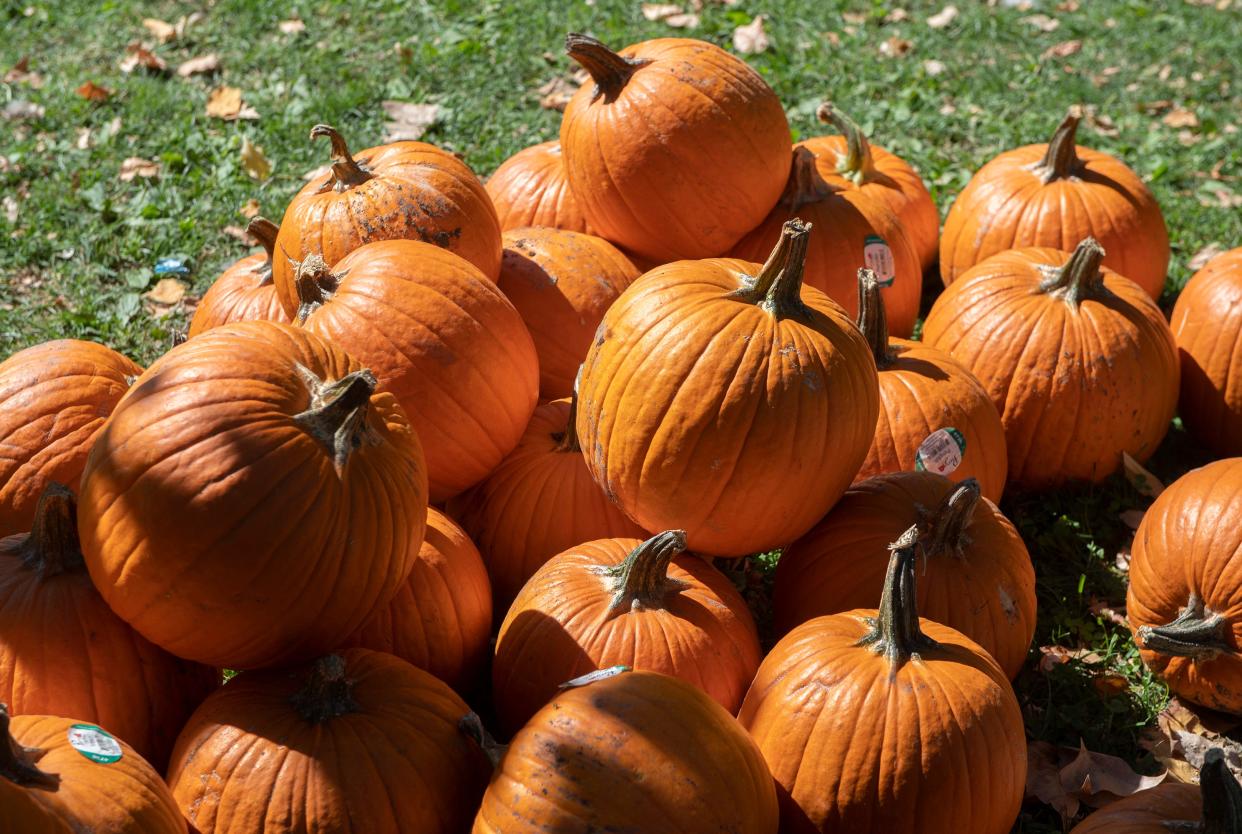Don't be caught off gourd when it comes to pumpkins

Pumpkins are a central element in many fall festivals and a beloved symbol of autumn. Here are some fun pumpkin facts and a few ideas of what you can do with your “pepon” after the fall festivities end.
The word “pumpkin” originates from “pepon,” which means “large melon” in Greek. It then evolved to “pompon” in French and “pumpion” in Britain. The Americans later changed it to “pumpkin,” the name we still use today.
Every year, the US produces 1.5 billion pounds of pumpkin. 80 percent of this crop (around 800 million pumpkins) are ripe for picking in one single month of the year — October.
Pumpkins are grown in most counties in California. The majority of commercial production takes place in San Joaquin County.
In 2021, 2,250 acres of pumpkins were harvested in San Joaquin County (54,500 tons)
Technically a fruit, the pumpkin is a winter squash in the family Cucurbitaceae which includes cucumbers and melons.
Every single part of a pumpkin is edible: the skin, leaves, flowers, pulp, seeds, and stems.
Pumpkins are 92% water.
Carving Jack-O’-Lanterns was brought to America by Irish immigrants. In their homeland, the Irish used to carve Jack-O’-Lanterns out of potatoes or turnips, but upon arrival in America, they began to use pumpkins instead because they were far easier to carve. The tradition of the “Jack-O’-Lantern” stems from an Irish legend about a man named Stingy Jack who was a somewhat unpleasant character famous for playing tricks on people.
Pumpkins take up a lot of space in our landfills. Of the 1.4 billion pounds produced in the US, about 900,000 tons end up in the landfill according to the World Economic Forum. Pumpkins also get buried and rot in an environment that lacks oxygen, which creates methane gas.
Trick or treat, festivals, concerts and more: October events in San Joaquin County
So what else can you do with them?
Add them to a compost pile: Pumpkins decompose quickly, making them ideal for composting. Even if you do not have an active compost pile, you can find a hidden spot for them in the yard to let them decompose. You should also remove all of the seeds unless you want pumpkins growing next year. Chopping up the pumpkins helps to speed up decomposition.
Holiday Decorations: Uncarved pumpkins can be used as a centerpiece for Thanksgiving or a planter filled with fall flowers for your porch. A coat of spray paint and some ribbon or other decorations turns them into Christmas ornaments, snowmen, and other fun holiday items.
Feed wildlife: Some local farms will take pumpkin donations to feed their animals. If you know someone with backyard chickens, they might take a few as a treat for their flock. You can feed the wildlife in your own backyard too. Split open the pumpkins so the flesh is exposed, and place them around your yard. Cut off the top half of the carved pumpkin and turn it into a bird feeder. Many birds and other small animals will also eat the pumpkin seeds. Don’t add seasoning or salt if you are saving them for wildlife and make sure use pumpkins that have not been treated with bleach which can be harmful to wildlife.
Eat them: A common fall tradition is roasting pumpkin seeds but there are other uses in the kitchen for pumpkins. You’ll want to stick with pumpkins that have not been carved. Many pumpkins are edible and can be used in pies, soups, breads and other recipes. Common Carving pumpkins have been bred for size and color rather than for taste but they are just as edible — although slightly less flavorful — than other varieties, such as sugar or pie pumpkins.
Save the seeds: You can save the pumpkin seeds to plant and grow next year. Scoop them out, rinse them off and put them on a paper towel to dry. You want them in a single layer, not touching. Leave them in a cool dry place for 3-4 weeks to make sure they are dry all the way through. Store them in a paper envelope until it’s time to plant next June or so. Keep in mind, that seeds from hybridized pumpkins may not grow into the same plant next year, you might get something totally different!
Finding ways to repurpose your pumpkin is a great way to give them a second life and keep them out of a landfill.
If you have gardening questions, contact the Master Gardeners at 209-953-6112 or visit our website at ucanr.edu/sjmg
This article originally appeared on The Record: Pumpkin facts you may not have known, plus how to get the most of them

